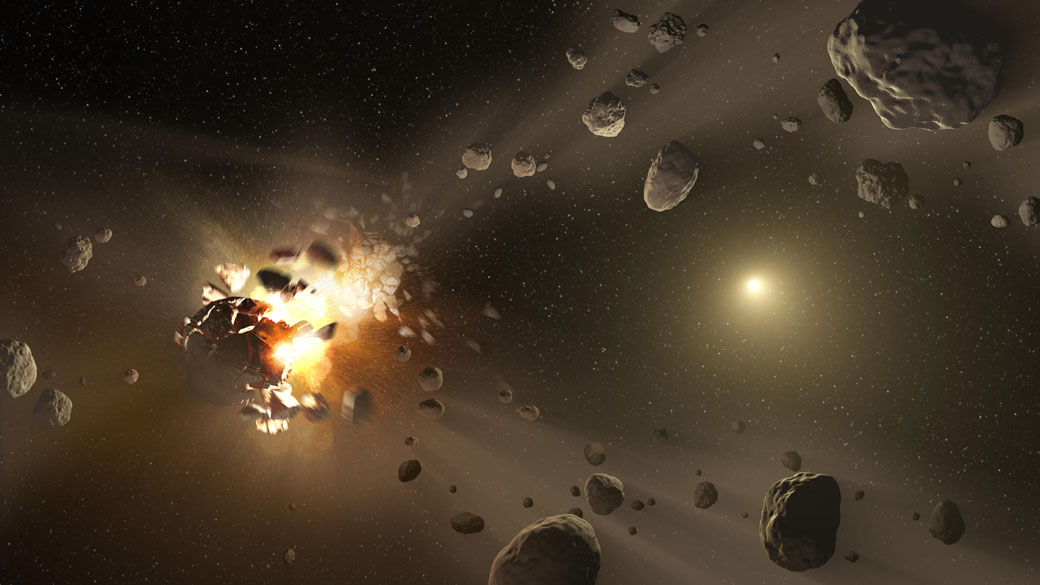TORONTO – Space is a very big place. So it stands to reason that sometimes you might lose track of something. You just hope that it isn’t a giant asteroid that is heading past Earth.

But it happens.
First, a little background.
Last week, media reports flooded the Internet about asteroid 2000 EM26. Yes, the asteroid is big — about 195 metres across. Yes, it was coming fairly close to Earth — about 8.8 lunar distances (1 lunar distance equals 384,401 km, or the average distance between the Earth and the moon, so 2000 EM26 was 3,382,728 km away). But it wasn’t anything you’d call spectacular.
To put things in perspective, let’s look back to last year, on Feb. 15, 2013. No, I’m not going to talk about the Russia meteorite that crashed to Earth. That’s as close a call as you can get (and it was relatively small, about 19 m across). Instead, there was quite a big asteroid that whizzed by Earth on the same day: asteroid 2012 DA14.
That asteroid was about 45 m in diameter and passed about 27,700 km from Earth. Now, that is close. So close that it is inside the orbit of our geostationary satellites, (they are located about 35,800 km above Earth). So there are asteroids that pass far closer than 2000 EM26 did.
And why give all the attention to 2000 EM26 being so massive? On Feb. 10, the asteroid 2006 DP14 at a whopping 730 m across passed just 6.2 lunar distances (about 2,383,28 km) from Earth. And there are even bigger asteroids and closer ones. Sometimes even bigger and closer at the same time.

Get breaking National news
READ MORE: Asteroid breaks up over Atlantic, Africa just 20 hours after discovery
Now, to the “lost” asteroid. It was expected to whiz by Earth on Feb. 18, except it didn’t. Or rather, it did and we didn’t see it.
The asteroid’s popularity over the past week likely lies with an online observatory, Slooh, which broadcast the flyby live (it often does this for astronomical events). Slooh’s broadcast was a yawn — they couldn’t find it. But to spice things up, they offered a “reward” to anyone who found 2000 EM26, offering to put the name of the person on their site for a year.
But the truth is, a disappearing asteroid isn’t that unusual.

Take, for example, asteroid 1950 DA, last seen 17 days after its discovery in 1950 until it was rediscovered in 2000. The asteroid made worldwide headlines in 2013 after a report entitled “Assessment of the 2880 impact threat from asteroid (29075) 1950 DA” was released on Oct. 3. The risk of the kilometre-wide asteroid 1950 DA hitting Earth was assessed at being roughly 33 per cent. Still, nothing to worry about.
NASA’s Near-Earth Object Program (NEO) studies the threat of these asteroids. And there is a scale to measure how dangerous an asteroid is to our planet, called the Torino Scale, which goes from 1 (normal, “no unusual level of danger”) to 10 (“collision is certain, capable of causing global climatic catastrophe, that may threaten the future of civilization as we know it”).
How does asteroid 1950 DA, with a 33 per cent chance of slamming into the Earth rank on the Torino Scale? One. So there will be no literal Earth-shattering impact, with bursting windows and giant tsunamis.
And here’s a little secret: there are no objects on the Torino Scale higher than 1.
READ MORE: Doomsday asteroids: Here we go again
And there are more “lost” asteroids.
In 2012, asteroid 2008SE85, first discovered in 2008, was “rediscovered” by German amateur astronomer Erwin Schwab.
In 2000, astronomers at the observatory in Kitt Peak, Ariz. found asteroid 719 Albert. The last time it was seen was 1911.
So what was spectacular about 2000 EM26? Nothing.
The asteroid has an orbital period that is shorter than Earth’s, which means it spends most of the time within Earth’s orbit, making it difficult to see because it’s always near the sun. After its initial discovery it has never been seen.
It could have been observed in 2003, 2006, 2009 and this year. But it wasn’t. The uncertainty of the position of 2000 EM26 is in the tens of degrees (astronomers measure the sky in degrees) — which is huge. Which means if you’re peering through a telescope with a degree field that is smaller than, say, 50 degrees (and you likely would be), you’re going to miss it.
And that means that not seeing asteroid EM26 was nothing unusual.
Don Yeomans, Manager of the Near-Earth Object Program at the Jet Propulsion Laboratory in Pasadena, Cali., also thought it peculiar that so much attention was given to the asteroid.
“It’s 8.8 lunar distances which I don’t consider very close. I mean, you’d expect an object of this size to get that close every six months or so.”
Though the exact orbit of 2000 EM26 is uncertain, Yeomans said that there is no chance — at least in the next few hundred years of calculations — that it will collide with Earth.
So, in the wise words of author Douglas Adams: Don’t panic.






Comments